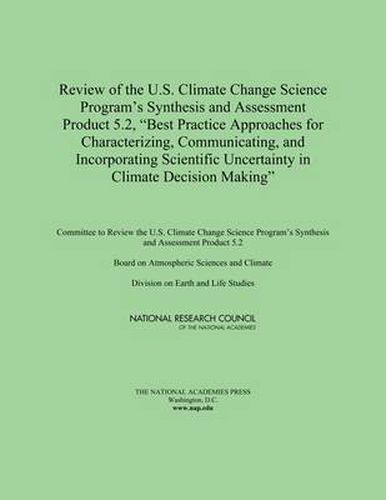Readings Newsletter
Become a Readings Member to make your shopping experience even easier.
Sign in or sign up for free!
You’re not far away from qualifying for FREE standard shipping within Australia
You’ve qualified for FREE standard shipping within Australia
The cart is loading…






This report reviews the U.S. Climate Change Science Program’s new draft assessment product on characterizing and communicating uncertainty information for climate change decision making, one of 21 climate change assessment products that the program is developing to meet the requirements of the 1990 Global Change Research Act. Although the draft assessment is effective in discussing methods of characterizing uncertainty, it falls short in several ways. It is written for researchers involved in assessment efforts and will likely be of use to them, but does not address other key audiences, particularly policymakers, decision-makers, and members of the media and general public. In addition, it does not assess the full range of best practice approaches for characterizing, incorporating, and communicating uncertainty. These weaknesses were due in part to a change in the prospectus after the process had begun to include new target audiences and a different scope of work. It will take a substantial revision of the current draft or production of a companion document, both requiring additional authors, to address these issues.
$9.00 standard shipping within Australia
FREE standard shipping within Australia for orders over $100.00
Express & International shipping calculated at checkout
This report reviews the U.S. Climate Change Science Program’s new draft assessment product on characterizing and communicating uncertainty information for climate change decision making, one of 21 climate change assessment products that the program is developing to meet the requirements of the 1990 Global Change Research Act. Although the draft assessment is effective in discussing methods of characterizing uncertainty, it falls short in several ways. It is written for researchers involved in assessment efforts and will likely be of use to them, but does not address other key audiences, particularly policymakers, decision-makers, and members of the media and general public. In addition, it does not assess the full range of best practice approaches for characterizing, incorporating, and communicating uncertainty. These weaknesses were due in part to a change in the prospectus after the process had begun to include new target audiences and a different scope of work. It will take a substantial revision of the current draft or production of a companion document, both requiring additional authors, to address these issues.